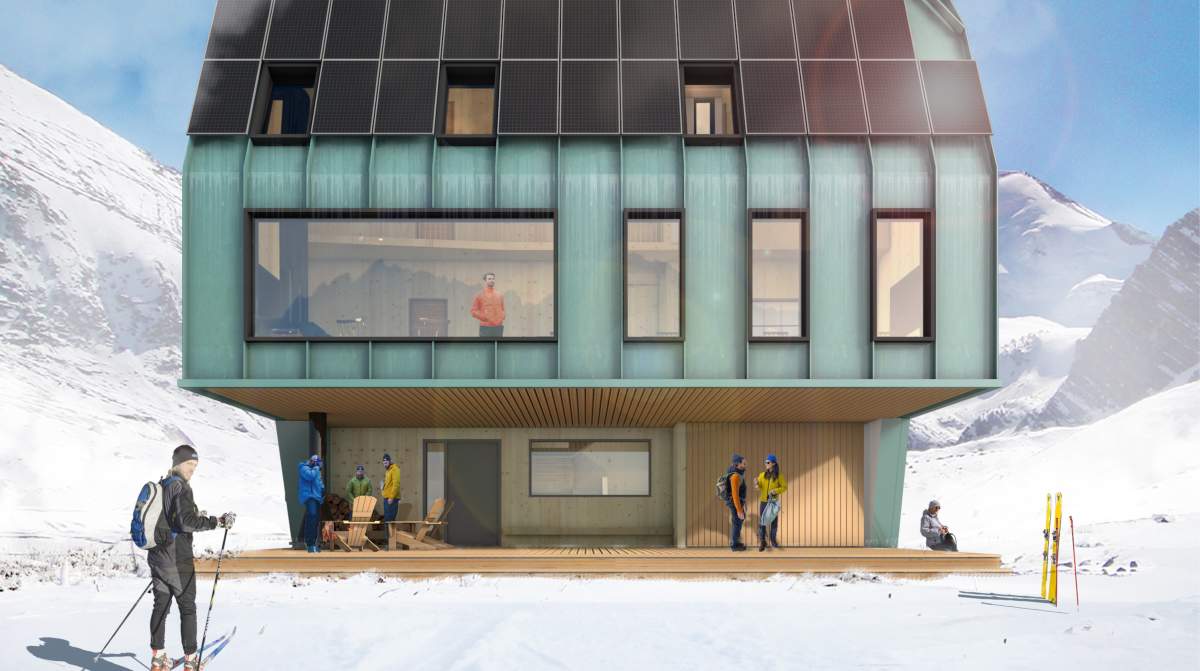A B.C. architecture firm is pitching the idea of a network of European-style huts, connecting Cypress Mountain and the Sea to Sky Gondola in Squamish.

Stephane Laroye, principal with architecture firm SLA, said he was inspired to work on the concept after a recent trip to Switzerland where he saw the country’s well-developed and easily accessible hut network in the alpine.
He said while there are already huts in the south coast backcountry, most are rustic, unstaffed, and dedicated to the advanced-level hiker.
“Having experienced intermediate and novice level hiking in Switzerland, I found that was really lacking here in B.C., certainly a culture around that,” he said.
“There are many day hikes that are very approachable to the point where they get a bit crazy. They become Instagram destinations because they are so approachable, and then some people find themselves getting in trouble. They do one of these novice hikes and then they get caught up in the high alpine.
“This would provide that overnight support that would allow the backcountry to be a little bit more approachable.”
As envisioned by SLA, the network would involve six multi-storey huts along the route from Cypress to Squamish, designed to minimize their footprint in the sensitive alpine environment. The huts would be constructed from B.C. wood and with passive design elements to reduce energy consumption.

Get daily National news
The vision includes washrooms with showers, rooms with bunk beds, reading nooks, yoga space and a dining area with a shared kitchen.
In Laroye’s concept, the huts would be staffed and charge a fee to visitors, and potentially even include meal preparation.
“I think locals would be very interested in this, but also for visitors to British Columbia. It’s a way to expand our tourism and a way to bring jobs to the Sea-to-Sky corridor,” Laroye said.
Laroye was emphatic that he was pitching a concept only — there is currently no developer or operator attached to the idea.
He said he’d like to see it taken up by either the province, the Squamish First Nation. or a company like the one operating the Sea to Sky Gondola.
Paul Kubik, director of cabins and trails development with the B.C. Mountaineering Club, said he sees major issues with the concept.
His organization is part of the current effort to complete the Howe Sound Crest Trail, and maintains a number of existing mountaineering and emergency huts throughout the area.
Kubik argued that making staffed huts work economically would be difficult.
“This area, the Howe Sound Crest Trail is extremely rugged … the terrain is not suited for novices, especially in winter,” he said.
“There are cliffs, bad snow, heavy rain, you name it. It’s not suitable for high numbers of people because it’s just too dangerous. It really appeals more to the rugged people that know how to navigate in the backountry and they have the training and the skills, so I would hesitate to think you would have the demand for that many people for this traverse.”
Kubic said there are several other major hurdles, including getting permission from BC Parks or Recreation Trails and Sites B.C. (RSTBC), a branch of the Ministry of Forests responsible for recreational use of Crown land.
He said the province has resisted even the development or expansion of small-scale cabins or backcountry infrastructure, and that both the province and search and rescue have previously expressed concerns about significant increases in the number of backcountry users.
“The demand is so high that eventually something bursts at the seams and RSTBC feels obligated to spend money, and with their limited budget they have concerns about having too many people in the backcountry.”
Kubic also pointed to access issues with the route, with hikes up to 12 hours to reach the Sea to Sky Highway if someone wanted to exit the trail at any point before completing the entire six-day route between Vancouver and Squamish.
WATCH: How to stay safe in the backcountry











Comments